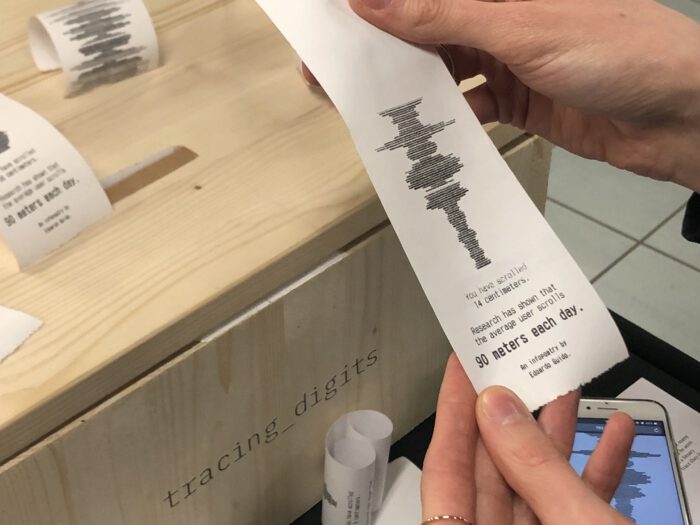tracing_digits
By Edoardo Guido
Internet users scroll approximately 90 meters per day, but not many of them are conscious of what this actually means. We see it as the way of walking the digital self; machines see it a binary sequence. This project makes users conscious of the trace they leave by moving through digital content.

